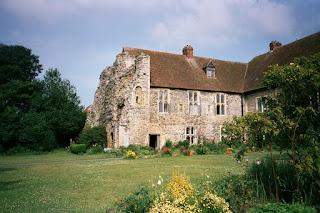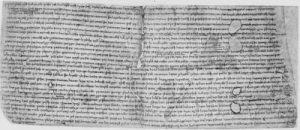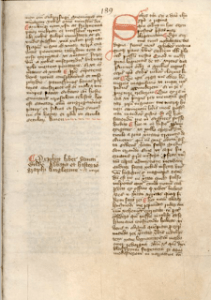
Anglo-Saxon Women, a guest post by the award winning author and historian Annie Whitehead. Annie specialises in the Anglo-Saxon period, in particular the lives of women in the era. In this post Annie addresses an area in which there are often misconceptions, the role and life experiences of Anglo-Saxon women. It is an area that is often misrepresented in the media, and one that people who are beginning to explore the period, may have preconceived ideas about. Annie kindly agreed to address these issues in a post for the website, so over to Annie…
Anglo-Saxon Women – Laws, Legacies and Literacy
It’s often assumed that women in pre-Conquest England had few rights and quite a miserable existence. Though we don’t know much about the lives of ordinary women, laws were in place which applied to all, and there is a great deal of information about noblewomen in other sources, too, when we look closely.
It’s fair to say that the law codes, particularly the earlier ones, are mainly concerned with property, punishment, thievery, murder and rules of trade, as well as observance of holy law. But women do get a mention; they are at least considered, and they do have rights.
In the laws of Kent (673-685) we find that:
“If a husband dies leaving a wife and child, it is right that the child should accompany the mother, and he is to be given one of his paternal kinsmen as a willing protector.”
Much later, King Æthelred II’s code of 1008 states:
“Each widow is to remain unmarried for twelve months; she is then to choose what she herself will.”
Laws concerning Anglo-Saxon widows
This suggests that a woman at least had some choice, dispelling the notion that women were always married off for monetary or political gain. Cnut’s laws expand on Æthelred’s, concerning the widow who remains unmarried for twelve months, decreeing that “A widow is never to be consecrated as a nun too hastily” and “Neither a widow nor a maiden is ever to be forced to marry a man whom she herself dislikes, nor to be given for money, unless he chooses to give anything of his own freewill.” So, by the 1020s at least, women could not be forced into marriage, or into a convent.
Betrothal of a Woman
In a document dating from somewhere between 975 and 1030, Concerning the Betrothal of a Woman, the woman herself had to accept the suitor before the betrothal could proceed, and she was allowed to keep whatever her groom granted her if they had a child together, while a marriage agreement from the early eleventh century confirms that the bride is given land which she may grant to whomsoever she pleases ‘during her lifetime or after her death.’
Inheritance laws and women in Anglo-Saxon England
Æthelgifu, a ten-century noblewoman
Bequests are interesting and extant wills give insight into women’s lives and their right to bequeath as they saw fit, though some were tested. Æthelgifu, a tenth-century noblewoman, was free to dispose of her husband’s property as she wished, but her inheritance as his widow was nevertheless disputed. She had to appeal to the king to have land restored which her nephew had taken from her (something that even queens were not immune from – Eadgifu was despoiled of her lands by her grandson King Eadwig and had to resort to the law to retrieve them). In her will, Æthelgifu also freed three women, on the condition that they each chanted four psalters a week for a month, and one a week for a year, after her death. It might be that Æthelgifu had established a small religious community among members of her household.
Wynflæd’s bequests
Wynflæd was another wealthy woman whose will survives. She left her ‘best dun tunic’ to one beneficiary while another legatee had the pick of the ‘black tunics’. It is the only occasion where tunics are referred to in the context of women’s clothing and the fact that these tunics are dull-coloured suggests that they might have been religious garments. Thus Wynflæd was probably another widow who was living the religious life in her home, rather than in a nunnery, one of a number of such women who did so without giving up their worldly goods. She also freed a number of slaves, although unlike in the will of Æthelgifu, there is no specific condition, only a request that she be remembered. Among her bequests of land, furniture, tapestries and jewellery, there are a number of books.
That Wynflæd had books in her possession suggests that she could read. She’d have been far from the only noblewoman to do so. From as early as the seventh century, levels of literacy were high.

Literacy amongst Anglo-Saxon Women
Bertha, Queen Consort of Æthelberht of Kent
Bertha was the daughter of the Frankish king, Charibert, and she married Æthelberht of Kent, in around 579. Bertha was a Christian, and she’s often cited as being an influence on her husband’s decision to convert, but what is also interesting about her is that Gregory of Tours, writing around or before 580, and thus a contemporary, said that she was literate, and if she corresponded with her family then this would amount to more than merely being able to read the Bible.
Cynethryth, wife of King Offa of Mercia
Cynethryth was the wife of King Offa of Mercia in the eighth century. She attested charters, and had coins struck in her name. She exercised joint lordship with Offa over the Mercian monasteries and she retained possession of the lucrative Cookham monastery after his death, which led her into dispute with the archdiocese of Canterbury. The monk and scholar, Alcuin, wrote to her son, Ecgfrith, reminding him that he should learn authority from his father and compassion from his mother and, tellingly, he asked that the king send greeting to her; he would have written to her himself but knew that the king’s business kept her too busy to read letters. Thus we must assume that she was literate.
Anglo-Saxon Women: Law on holding lands
Cwoenthryth was the daughter of King Cenwulf
Cwoenthryth was the daughter of King Cenwulf, who succeeded Ecgfrith (who only reigned for a matter of months). Cwoenthryth was named as his heir, not to the throne, but to his property, and she became abbess of the family house at Winchcombe, the burial place of her father. She also inherited an argument concerning the lands, which Wulfred, archbishop of Canterbury, insisted belonged to the Church. As well as Winchcombe in Mercia she inherited houses in Kent: Minster-in-Thanet and Reculver. [Minster-in-Thanet Abbey is shown in the image at the head of the post].
She cannot have overseen all three sites in person; she was clearly in charge of a wide network, and with the religious houses acting as centres for growing settlements, she would have been a powerful woman in charge of huge revenues. The eventual settlement of the dispute saw Cwoenthryth remaining in possession and in charge of Winchcombe, and continuing her role as abbess of the Kentish abbeys but she had to recognise Wulfred’s authority over them and the associated lands.
Anglo-Saxon Women, Literacy and Rights
Wealthy abbesses such as Cynethryth and Cwoenthryth would need to scrutinise documents, especially when in dispute with the Church. Letters, legal documents, land grants: they wouldn’t have been able to manage these huge, profitable estates unless they could be sure what was written on those important documents, and it seems unlikely that they would trust the word of someone reading them out loud.
In his Chronicle of the Kings of England, the Anglo-Norman monk William of Malmesbury said that tenth-century ruler Edward the Elder brought up his daughters so that, ‘in childhood they gave their whole attention to literature, and afterwards employed themselves in the labours of the distaff and the needle.’ So not only were the royal daughters skilled in sewing and embroidery, it seems they were literate too.
Moving into the eleventh century, the story of powerful women is dominated by Queen Emma, wife of both King Æthelred II and King Cnut. During her fight for her son Harthacnut’s right to the English throne, she commissioned a work called the Encomium Emmæ Reginæ which, one would assume, Emma would have wanted to read herself, and thus we must assume that she, too, was literate.
Of course, women did not hold power in the traditional sense, except in the case of Æthelflæd, Lady of the Mercians (who merits a completely separate article), but we can clearly see from the above that they wielded influence, had rights, and were, in some cases, highly educated.

Biography of Annie Whitehead:
Annie Whitehead is a writer, historian, and elected member of the Royal Historical Society, and has written four award-winning novels set in Anglo-Saxon England. She has contributed to fiction and nonfiction anthologies, written for various magazines and won prizes for both her fiction and nonfiction. She was the winner of the inaugural Historical Writers’ Association/Dorothy Dunnett Prize 2017 and is now a judge for that same competition. She has also been a judge for the HNS (Historical Novel Society) Short Story Competition. Her nonfiction books are published by Amberley Books (Mercia: The rise and Fall of a Kingdom) and Pen & Sword Books (Women of Power in Anglos-Saxon England). She has recently signed a contract to contribute to a new history of English kings, to be published by Hodder & Stoughton in 2023.
Links:
Website https://anniewhiteheadauthor.co.uk/
Blog https://anniewhitehead2.blogspot.com/
Amazon http://viewauthor.at/Annie-Whitehead
Twitter https://twitter.com/AnnieWHistory
Facebook https://www.facebook.com/anniewhiteheadauthor/
Instagram https://www.instagram.com/anniewhiteheadauthor/
Image Credits
All of the images have been provided by Annie Whitehead.
The featured image is Minster Abbey, in Minster-in-Thanet. This image is courtesy of the community at Minster Abbey.
Wynflaed’s Will. Photograph of the archived will. Annie Whitehead.
A page from Encomium Emmæ Reginæ.
Related Links
Source Material on Anglo-Saxon England
Animated Anglo-Saxon Chronicle
Bede’s Ecclesiastical History of England
Leave a Reply
You must be logged in to post a comment.